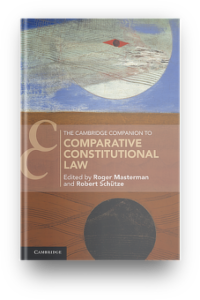International law has always been conceived as a project involving sovereign and equal states, who would be forever locked in battle with each other – if not literally, then at least metaphorically. The international legal order, such as it is, was always conceptualized as a horizontal order, mostly geared towards facilitating the co- existence of states, and with scant attention for planetary unity, or even for the interests of individual human beings. International law was made by states, to regulate relations between states, and for the benefit of states. What happened within those states was long considered anathema, and nothing was supposed to exist above those states.
If this has always and invariably been the dominant strand in conceptualizations of the global legal order, eventually to be confirmed by the Permanent Court of International Justice in some of its classic decisions, individual thinkers through the ages have nonetheless occasionally dared to dream of something bigger. Grotius, for one, dreamt of collective security, of a legal order that would distinguish between just and unjust wars and collectively punish the wrongdoer. Christian Wolff posited the existence of a civitas maxima , a world government with authority over states. Immanuel Kant, worried about the possible tyrannical side of world government, posited a confederation of republics as the recipe for eternal peace, a stand which at least presupposes peace as a legitimate telos for the society of states, as opposed to the proto-Darwinian (or Hobbesian) struggle of all against all. 1
But such dreams notwithstanding, for all practical purposes international law long remained a system of rules created by, between and for equals enjoying the status of sovereignty, serving no higher goals than the peaceful (if at all possible) co-existence between those same states. Some may have identified a connection to the domestic law of those states, and Wolfgang Friedmann may have famously posited that the law of co- existence was in the process of being joined by a law of cooperation, 2 but until the late 1960s, early 1970s, these changes were little more than window- dressing.
During the 1960s, however, some states started to think that there might be some norms which were simply intransgressible, and formalized this into the idea of juscogens norms: some norms exist from which no derogation is permitted. 3 The International Court of Justice added, in 1970, the idea that there exist norms which affect the legal interests of all states: these give rise to so- called ergaomnes obligations. 4 And less than a decade later, people had started to think it might be possible to distinguish between state torts and state crimes. 5 It never became very clear what either of these developments meant, and the tort– crime distinction rather rapidly proved difficult to operationalize, but somehow the seeds had been planted. Jus cogens norms, erga omnes obligations, and state crimes, they all presuppose something of a hierarchical, vertical element in the order that had traditionally been made up of sovereign equals, and had been based on the consent of those sovereign equals.
These seeds would come to fruition for a brief period, roughly the first decade of the new millennium, with many proclaiming the constitutionalization of international law, either as an ontological reality or at least as a desideratum. For about a decade, the putative constitutionalization of international law captured the interests of international lawyers – for reasons to be discussed, in Section 1 . Sections 2 to 5 discuss different manifestations of thinking about constitutionalization; section 6 provides a view of the field after the smoke has cleared, while the final section concludes.
1 For a fi ne overview, see M. Mazower , Governing the World ( Allen Lane , 2012 ) .
2 See W. Friedmann , The Changing Structure of International Law ( Columbia University
Press , 1964 ) .
3 The concept came to be solidifi ed in Article 53 Vienna Convention on the Law of Treaties.
4 See Case Concerning the Barcelona Traction, Light and Power Company (Belgium v. Spain),
second phase (1970) ICJ Reports 3.
5 Most notably the International Law Commission. For discussion, see N. Jorgensen , The
Responsibility of States for International Crimes ( Oxford University Press , 2000 ) .
